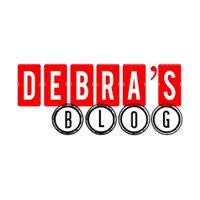I am, as you know, such a huge fan of small talk; but sometimes small talk can be the culprit of derailed meetings. In my BST life (Before Small Talk) I sat through a highly anticipated meeting where a group of smart, savvy, stylish people were gathered to discuss something critical. I knew it was important because there was an agenda on fancy paper! And we each had our own pen! And a cold bottle of water! This – THIS – is what productive meetings looked like. I was in the big leagues. And boy was I ready.
Well, two and half hours and three coffees later, I was not only overcaffenieted, but I was confused. We had accomplished – wait, let me think…that’s right – nothing. We started off discussing the topic at hand and then one loud, overzealous guest offered a “just a side-note” (his exact words) that ended up catapulting the entire meeting into a different solar system.
I share tips on successful meeting agendas in my book, but here’s the short version on how to keep a meeting on track without interrupting the flow of creative contribution:
- The agenda should include a list of goals and, if appropriate, necessary decisions or actions to achieve those goals.
- Schedule meetings before noon, when guests are typically more alert and not suffering from the post-lunch fog. Avoid serving food at meetings as it tends to distract the attendees and disrupt events.
- Estimate how much time each bullet point requires, add a small amount of additional time to allow for inspired input, and keep those numbers in mind while facilitating the meeting. Even if you haven’t shared timing with the group, by noting it on your own agenda copy, you can keep yourself, and others, on track.
- Tough matters should be separated, if possible. Discussing two tricky items back-to-back is exhausting for the group and often makes it difficult to achieve progress. Start with something important, follow-up with a lighter agenda item and then go back to something of higher priority.
- Politely but firmly stick to not only the items on the agenda, but the order in which they appear. “Thanks, Paul, let’s discuss that further when we get to the third bullet point.”
- If a talking point is introduced that is not on the agenda, and if it is not conducive to the topic at hand, offer to discuss it at a later date: “That’s an interesting thought, Kate, I will make a note of that and consider it for our next meeting.”
- Be vigilant in getting the results you need and want. If someone has been assigned to a task or if a decision by the group must be made, define the need and ask for the outcome before moving on to the next agenda point: “Wow, I am impressed with the feedback on this topic. Andrew, can you provide a two sentence synopsis on how and when you will take this idea across the finish line?” or “Let’s take a final vote on this point before we break for fifteen minutes.”
- Close the meeting by thanking attendees for their time and energy, follow-up with an email of meeting minutes and clearly defined tasks, and drop that third coffee – you no longer need it to survive tangential tid-bits of irrelevant information.
With a few easy steps, I can almost promise you a career of successful and succinct meeting


